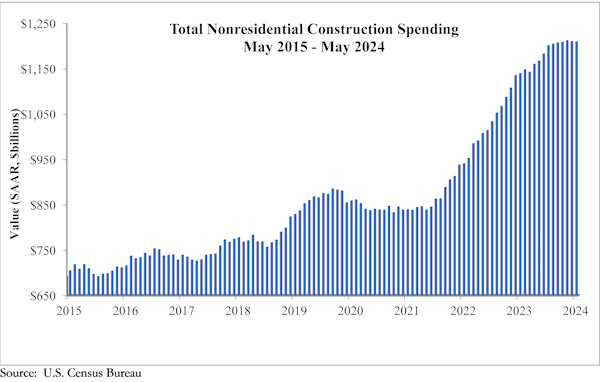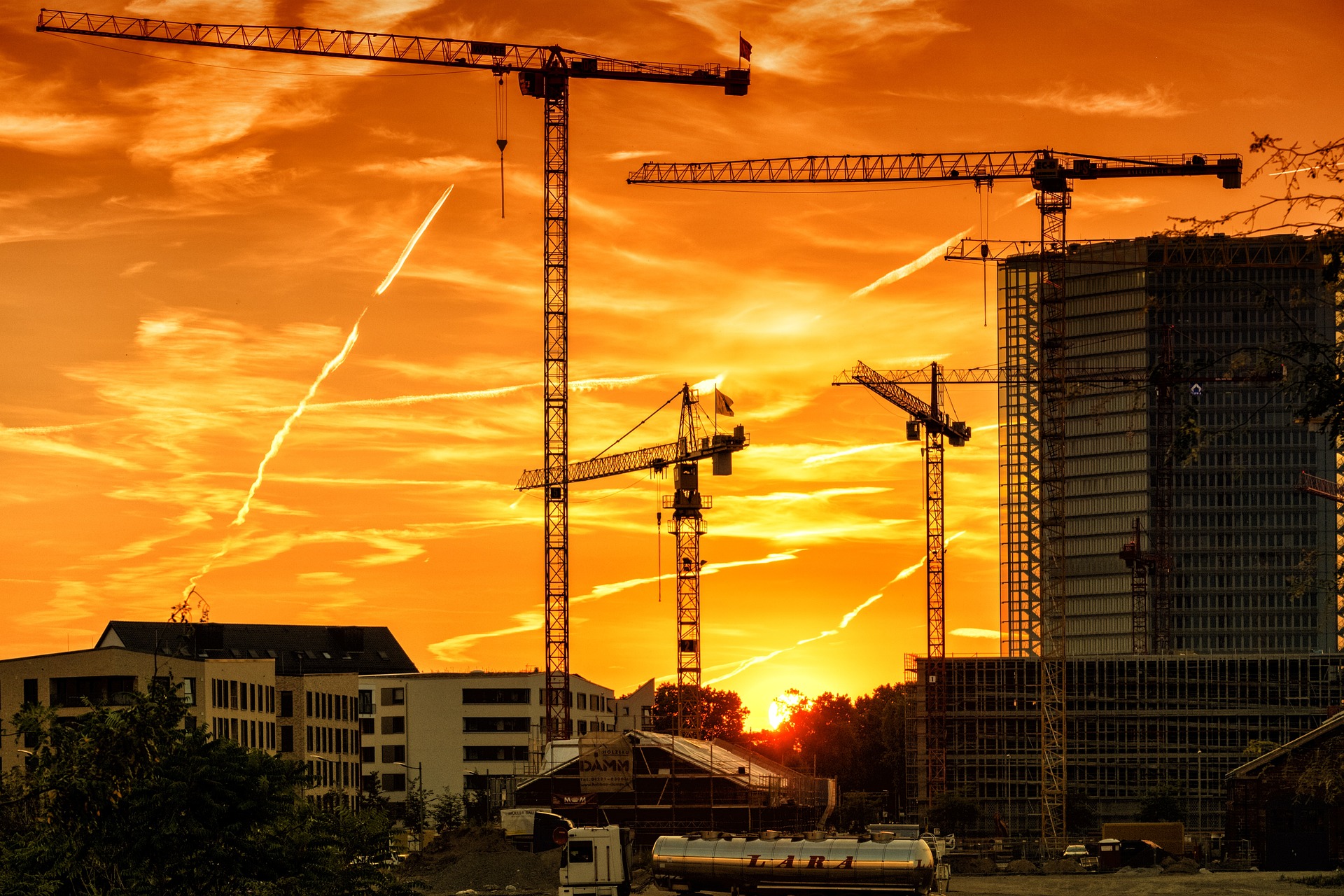National nonresidential construction spending decreased 0.1% in May, according to an Associated Builders and Contractors analysis of data published today by the U.S. Census Bureau. On a seasonally adjusted annualized basis, nonresidential spending totaled $1.21 trillion.
Spending declined on a monthly basis in 9 of the 16 nonresidential subcategories. Private nonresidential spending decreased 0.3%, while public nonresidential construction spending was up 0.4% in May.
“Nonresidential construction spending has fallen for two consecutive months yet remains just 0.2% below the all-time high achieved in March 2024,” said ABC Chief Economist Anirban Basu. “Much of that progress is attributable to ongoing infrastructure investments, which spurred a sizable 0.4% increase in publicly funded nonresidential spending in May.

“Private nonresidential spending has lagged and, after falling 0.3% in May, is up just 4.1% year over year,” said Basu. “That weakness can be tied to interest rate-sensitive segments like office and commercial, both of which have also been hampered by altered demand dynamics in the wake of the pandemic. Despite this recent private sector moderation, contractors remain confident about the next few quarters, with a majority expecting their sales to increase over the next six months, according to ABC’s Construction Confidence Index.”
Visit abc.org/economics for the Construction Backlog Indicator and Construction Confidence Index, plus analysis of spending, employment, job openings and the Producer Price Index.

Related Stories
| Aug 11, 2010
2009 Judging Panel
A Matthew H. Johnson, PE Associate Principal Simpson Gumpertz & HegerWaltham, Mass. B K. Nam Shiu, SE, PEVP Walker Restoration Consultants Elgin, Ill. C David P. Callan, PE, CEM, LEED APSVPEnvironmental Systems DesignChicago D Ken Osmun, PA, DBIA, LEED AP Group President, ConstructionWight & Company Darien, Ill.
| Aug 11, 2010
Inspiring Offices: Office Design That Drives Creativity
Office design has always been linked to productivity—how many workers can be reasonably squeezed into a given space—but why isn’t it more frequently linked to creativity? “In general, I don’t think enough people link the design of space to business outcome,” says Janice Linster, partner with the Minneapolis design firm Studio Hive.







